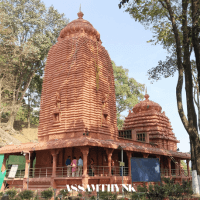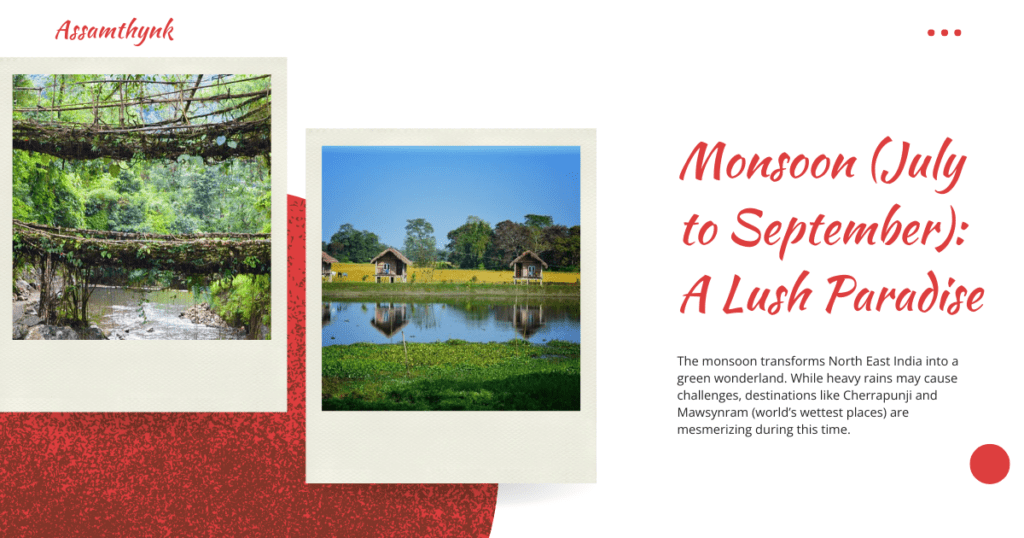Introduction
Malinithan Temple Tourism offers a unique blend of mythology, history, and archaeology nestled in the serene landscapes of Arunachal Pradesh. Located in the Lower Siang district, near the Assam-Arunachal border, Malinithan is an ancient temple site dedicated to Goddess Durga, revered here as Malini. The temple ruins date back to the 10th–14th century and are renowned for their intricate sculptures, granite architecture, and deep cultural significance. According to legend, this is the site where Lord Krishna and Rukmini stopped on their journey, adding divine charm to its historical appeal. Malinithan Temple Tourism not only attracts pilgrims but also fascinates history enthusiasts, archaeologists, and spiritual travellers. Surrounded by lush hills and overlooking the majestic Siang River, the temple offers a scenic and peaceful retreat. Whether you’re seeking divine blessings or a glimpse into Northeast India’s glorious past, Malinithan is a must-visit destination that captures the soul of spiritual heritage tourism.
Where is Malinithan Temple?
Malinithan Temple is located in Likabali, in the Lower Siang District of Arunachal Pradesh, near the Assam-Arunachal border. It lies at an altitude of approximately 250 meters above sea level, providing a serene view of the hills and valleys surrounding the Brahmaputra plains.
Coordinates: 27.61°N, 94.63°E
Nearest town: Likabali (2–3 km)
Nearest city: Silapathar, Assam (18 km)
How to Reach Malinithan Temple
Reaching Malinithan Temple is quite convenient due to its proximity to the Assam border.
By Road:
From Silapathar, you can hire taxis or autos to reach Malinithan (approx. 30 minutes).
Buses and shared taxis run from Dhemaji, Pasighat,
By Train:
Nearest Railway Station: Silapathar Railway Station (18 km)
Well connected to Guwahati and Dibrugarh via major trains.
By Air:
Nearest Airport: Dibrugarh Airport (approx. 150 km)
From the airport, hire a taxi to reach Silapathar or directly to Likabali.
Malinithan Temple Timings and Entry Fee
Details | Information |
|---|---|
| Opening Hours | 6:00 AM – 6:00 PM |
| Entry Fee | Free |
| Photography | Allowed (No extra charges) |
| Best Time to Visit | October to March |
The site remains open all days of the week, including public holidays.
Historical and Mythological Significance
History:
Malinithan Temple is a significant archaeological and historical site located in Likabali, Arunachal Pradesh. Believed to date back to the 10th–14th century CE, it represents the rich cultural and religious heritage of Northeast India. Historians suggest that the temple was built during the reign of the Chutia Kingdom or an early tribal dynasty, showcasing advanced stone masonry and temple architecture.
The temple was constructed using finely carved granite blocks, which is unusual for the region and period. Excavations by the Archaeological Survey of India (ASI) unearthed various sculptures of Hindu deities such as Durga, Shiva, Surya, Indra, and Nandi, as well as intricate floral and geometric carvings. The idol of Goddess Durga slaying Mahishasura, found at the site, highlights its religious significance and craftsmanship.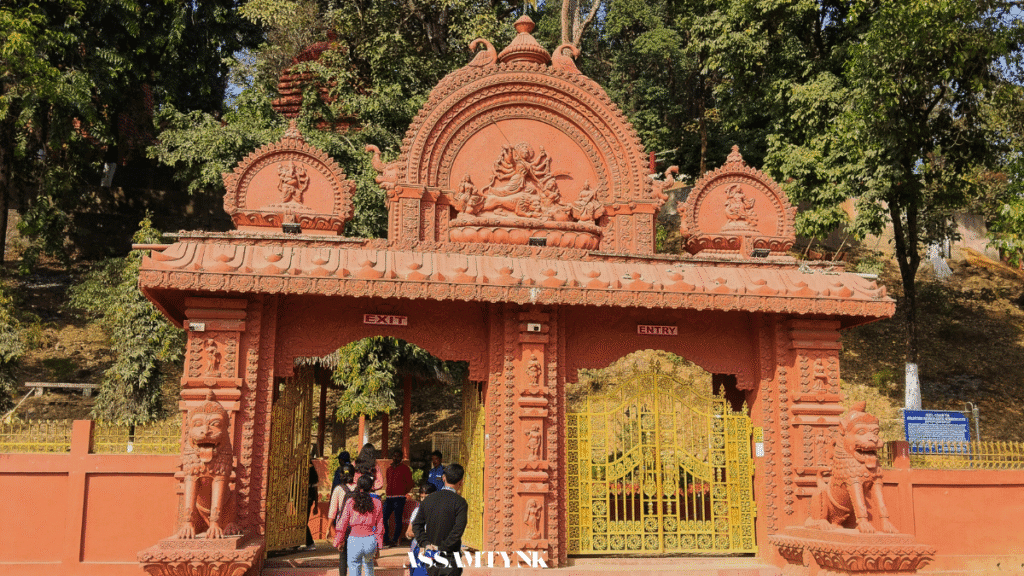
Mythologically, the temple is associated with Lord Krishna and Rukmini, who are believed to have rested here after eloping from her father’s palace. The place was then known as the abode of Goddess Malini—a form of Durga—earning it the name “Malinithan.”
Today, though the temple stands in ruins, it continues to be a symbol of spiritual legacy and historical depth, attracting scholars, devotees, and tourists alike.
Mythology:
Malinithan Temple holds deep roots in Hindu mythology, particularly linked to the epic love story of Lord Krishna and Rukmini. According to legend, when Krishna eloped with Princess Rukmini—who was to be forcefully married to Shishupala—they passed through the hills of present-day Likabali, where they paused to rest. Here, they were welcomed by Goddess Durga, who blessed their union.
The goddess is believed to have appeared in her form as Malini, and the place was later named Malinithan, meaning “the seat of Goddess Malini.” This divine episode transformed the site into a sacred abode, where devotees came to offer prayers to Durga as the powerful embodiment of feminine energy and protection.
The temple was built in her honour, and the idol discovered during excavation—Durga slaying the demon Mahishasura—symbolizes the triumph of good over evil. The presence of other deities like Shiva, Surya, and Nandi further reinforces its mythological importance.
Malinithan’s connection to Krishna, Rukmini, and Durga makes it a revered pilgrimage site in Northeast India. Even in its ruined state, the temple continues to draw devotees who believe in the divine blessings and ancient power that still linger at the site.
Architecture and Temple Ruins
The ruins of Malinithan Temple stand as a testament to the artistic brilliance and architectural sophistication of ancient builders in the region. Constructed using finely carved granite blocks, the temple showcases advanced skills in stone masonry and structural planning, believed to date back to the 10th–12th century CE under the rule of the Chutiya kings or earlier local dynasties.
The temple’s plinth and surviving structures are richly adorned with floral motifs, geometrical patterns, and ornamental pillars. Among its most striking features are the stone sculptures of major Hindu deities such as Durga, Lord Shiva, Indra, Surya, and Nandi, each intricately detailed and expressive in style.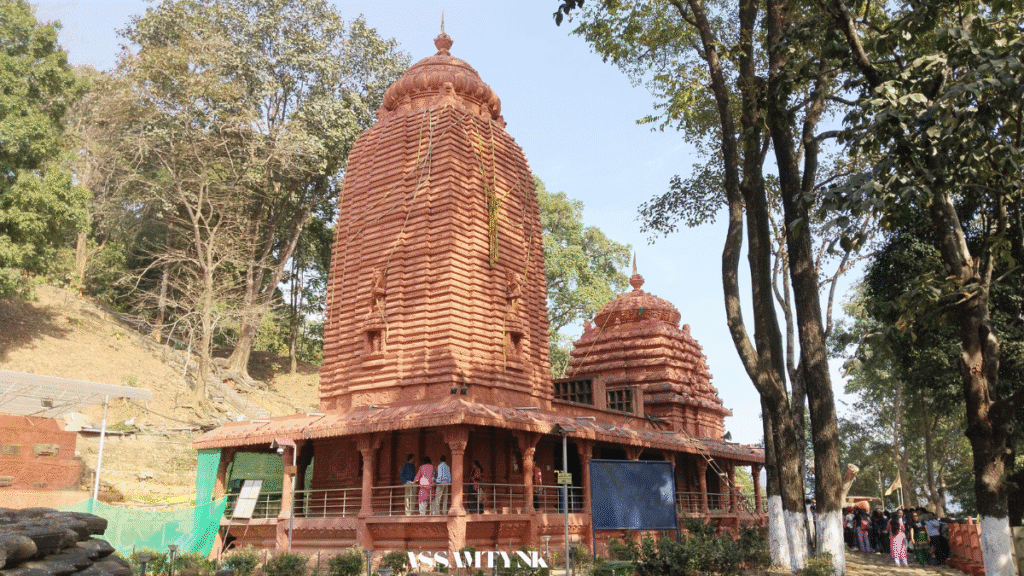
The highlight of the site is the idol of Goddess Durga as Shakti, depicted in a dynamic posture slaying the demon Mahishasura—a theme commonly found in Eastern Indian temple art, especially in Bengal and Odisha.
Though large sections of the temple have collapsed over time, the grandeur of its design continues to captivate archaeologists, historians, and tourists. The surviving sculptures and architectural elements provide a glimpse into a flourishing artistic legacy, making Malinithan not only a spiritual center but also an architectural gem of Arunachal Pradesh.
Attractions Near Malinithan Temple, Dhemaji (300 Words)
Located on the northern bank of the Brahmaputra River in the foothills of Arunachal Pradesh, Malinithan Temple not only offers spiritual serenity and historical value but is also surrounded by several fascinating destinations that enhance its tourism appeal. If you’re visiting Malinithan, take the time to explore the nearby Dhemaji district, known for its natural beauty, tribal culture, and lesser-known historical sites.
1. Akashi Ganga Waterfalls
Just a few kilometers from Malinithan, Akashi Ganga is a scenic waterfall that holds both spiritual and natural significance. It is believed to be associated with the myth of Sati and Lord Shiva, making it a pilgrimage spot as well. The gushing waters and lush greenery make it ideal for photography and nature walks.
2. Silapathar Town
Located around 25 km from Malinithan, Silapathar is a growing urban hub in Dhemaji district. It offers markets, traditional Assamese eateries, and serves as a transit point for travelers heading into Arunachal Pradesh. The town is also known for its festivals and cultural vibrancy.
3. Dhemaji Town
Approximately 65 km from Malinithan, Dhemaji Town is the district headquarters and offers a look into rural Assamese life. The town is dotted with paddy fields, tea gardens, and vibrant local markets. It’s a good place to explore local crafts and traditional Assamese handlooms.
4. Samdang Picnic Spot
A hidden gem near Dhemaji, Samdang is popular among locals for weekend getaways. The serene environment and riverbank setting make it ideal for picnics and family visits.
Whether you’re a spiritual seeker, a history enthusiast, or a nature lover, the region surrounding Malinithan Temple offers diverse attractions that promise a fulfilling travel experience.
Festivals Celebrated at Malinithan Temple
Though the Malinithan Temple stands in ruins, it remains a vibrant spiritual center, especially during major Hindu festivals. Durga Puja, celebrated in October, draws large gatherings of devotees who offer prayers and perform traditional rituals near the idol of Goddess Durga. Another key event is the Rath Yatra, accompanied by local processions and devotional songs. Annual fairs held at the site feature tribal dance performances, cultural shows, and local handicraft stalls, blending Assamese and Arunachali traditions. These celebrations transform the archaeological site into a hub of faith and festivity, preserving the temple’s cultural significance even today.
Festivals Celebrated at Malinithan Temple
Despite being in ruins, Malinithan Temple remains spiritually vibrant, especially during festivals. Durga Puja, celebrated in October, is the most important event here. Devotees from nearby Assam and Arunachal Pradesh gather in large numbers to offer prayers to Goddess Durga, whose idol as Mahishasuramardini is a key attraction. Rituals, offerings, and chanting fill the air with devotion and reverence.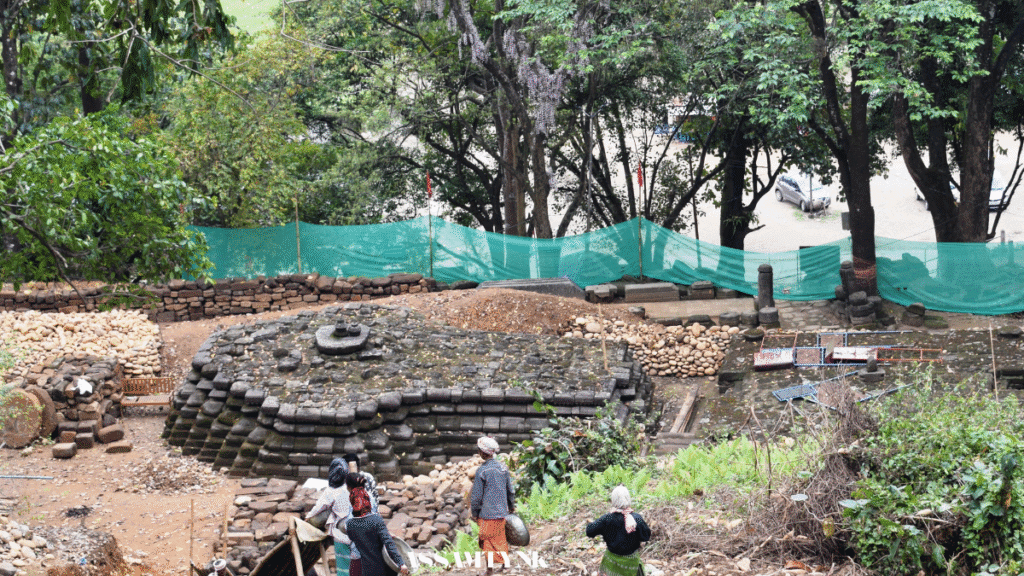
Another major celebration is the Rath Yatra, where small processions are held, echoing ancient temple traditions. The site also hosts annual fairs, featuring cultural programs, folk dances, tribal music, and local crafts, creating a colourful festive ambience.
These events reflect a beautiful blend of Assamese and Arunachali cultures, showcasing unity through faith. Even though the temple structure is mostly in ruins, the festivals breathe life into the sacred space, keeping its religious and cultural legacy alive.
Best Time to Visit Malinithan Temple
The best time to visit Malinithan Temple is during the winter and early spring months—from October to March—when the weather is pleasant and ideal for exploring the temple ruins and nearby attractions. This period also coincides with Durga Puja and local cultural fairs, offering visitors a chance to experience the spiritual energy and festive atmosphere of the site. Summers can be hot and humid, while the monsoon season (June to September) may disrupt travel plans due to heavy rainfall. For both sightseeing and cultural experiences, plan your trip in the cooler, post-monsoon months.
Accommodation and Food
Where to Stay:
- Silapathar offers budget hotels and lodges
Basic guesthouses available in Likabali
Where to Eat:
Local eateries serve Assamese and tribal cuisine like rice, fish curry, smoked pork, and bamboo shoot dishes.
Carry water and snacks if you’re on a short trip.
Travel Tips for Malinithan Temple Visitors
Carry your ILP if you’re an Indian citizen traveling to Arunachal.
Wear comfortable shoes – some walking on uneven terrain is required.
Respect the heritage site – avoid touching sculptures or littering.
Mobile signal may be weak – inform someone before traveling.
Take cash – ATMs are limited in Likabali.
Conclusion
Malinithan Temple is a hidden gem of Arunachal Pradesh, rich in mythology, history, and natural beauty. Whether you’re a spiritual traveler, a history enthusiast, or simply looking to explore Northeast India’s cultural treasures, Malinithan offers a unique and rewarding experience.
With its strategic location, beautiful ruins, and mythological charm, a visit to Malinithan is a step back into a forgotten era where legend meets reality.
What is the significance of Malinithan Temple?
It is an ancient temple dedicated to Goddess Durga (Malini), known for its mythological connection with Lord Krishna and Rukmini.
What is the best time to visit Malinithan Temple?
The best time to visit is from October to April when the weather is pleasant and festivals like Durga Puja are celebrated.
What are the main attractions at Malinithan Temple?
What are the main attractions at Malinithan Temple?
Is there any entry fee for Malinithan Temple?
Currently, there is no official entry fee, but this may change with further development.
How to reach Malinithan Temple?
You can reach Malinithan by road from Likabali (4 km) or from Dhemaji (Assam). Nearest railway station: Silapathar.
Are there accommodation facilities near Malinithan Temple?
Basic guest houses are available in Likabali and nearby towns. Luxury hotels are limited.
Is photography allowed at Malinithan Temple?
Yes, photography is generally allowed, but avoid damaging or touching the ancient sculptures.
Are there any festivals celebrated at Malinithan Temple?
Yes, Durga Puja and local tribal fairs are celebrated with cultural performances and rituals.
Why is Malinithan important in Arunachal Pradesh tourism?
It is one of the few archaeological sites in the state, blending history, spirituality, and scenic beauty, making it a key heritage tourism spot.

